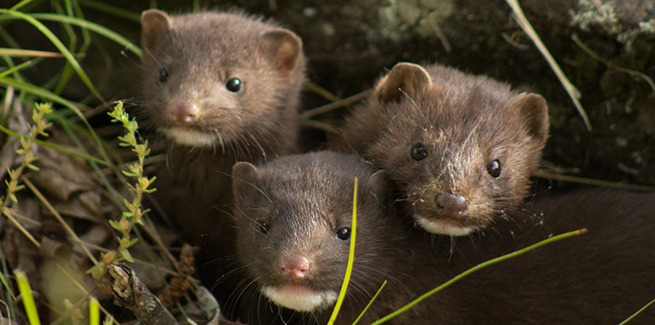Utah mink farms report deadly coronavirus outbreak

Minks at fur farms in Utah have tested positive for SARS-CoV-2, the virus that causes COVID-19 in humans, according to a statement issued by the US Department of Agriculture (USDA) last week. It marks the first time the virus has been found in minks in the US, although multiple outbreaks of coronavirus in minks have been reported in Europe since April, beginning with several mink farms in the Netherlands. Similar outbreaks followed in Denmark and Spain, which lead to widespread culling.
More than a million minks were reportedly killed in those three countries in an effort to control the spread of the virus, to limited effect: as of July 30, at least 27 fur farms in the Netherlands alone had been hit.
The USDA noted in its statement that “unusually large numbers” of minks died at the Utah farms.
NEWStat asked Dean Taylor, DVM, Utah’s state veterinarian and the official in charge of overseeing the investigation, how many of the minks tested positive.
“We don’t have solid numbers and we aren’t releasing that information yet as a result,” Taylor said. He was able to confirm that SARS-CoV-2 was found in minks on three Utah farms so far, and he was awaiting confirmation of infection of additional minks at two others
Employees at the farms in Utah also tested positive for the coronavirus, but so far there’s no official word on whether the minks infested the humans or vice versa. “The US Centers for Disease Control and Prevention [CDC] is studying and testing right now to try and determine the mode of transmission,” Taylor told NEWStat, adding that the CDC still believes that animal-to-human transmission of SARS-CoV-2 is rare, “including in this case.”
Dutch researchers tell a different story.
They say genetic analysis suggested that minks on one Dutch farm may have caught the virus from humans and then passed it back to two farmworkers, in what they call the world’s first “plausible” reports of animal-to-human transmission.
The World Health Organization (WHO), along with several universities and research institutes, are studying the transmission of the virus between animals and people. While the WHO concedes that it is possible transmission on the mink-breeding farms may have occurred both ways, Maria Van Kerkhove, PhD, who specializes in emerging infectious diseases, recently stated that such transmission was “very limited.”
Christine Petersen, DVM, PhD, director of the Center for Emerging Infectious Diseases at the University of Iowa, told NEWStat that she isn’t surprised that such a high number of minks have died in Utah: “Farmed minks are a homogeneous population in close contact,” she said. “If one asymptomatic person inoculates this population, it’s likely to spread through them like wildfire.” She added that it was “a similar story in the Netherlands.”
The situation in Utah might be of particular interest to veterinarians who treat pet ferrets, a species closely related to minks and equally susceptible to coronavirus.
“Ferrets are a great animal model for flu due to their lung physiology, and minks are similar,” Peterson said. “Since SARS-CoV-2 has a similar pathophysiology, it makes sense that minks can be readily infected.”
And will the infected Utah minks suffer a similar fate to their culled European kin?
Not according to Taylor: “I have no current plans to cull the minks,” he said.
Photo credit: © Gettyimages/Steven Flannigan



